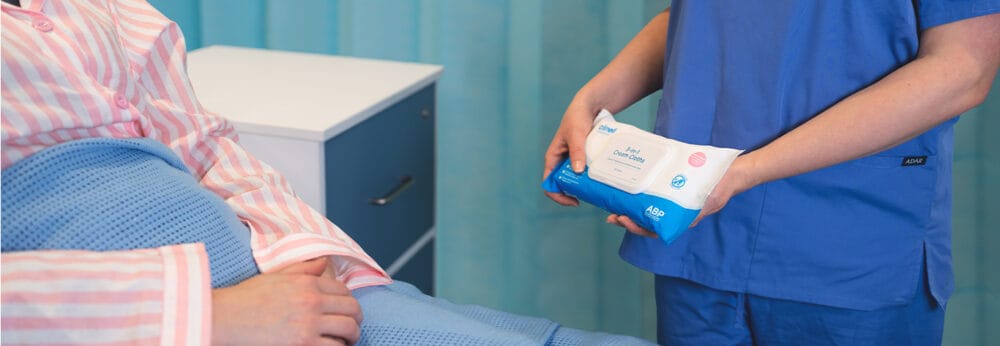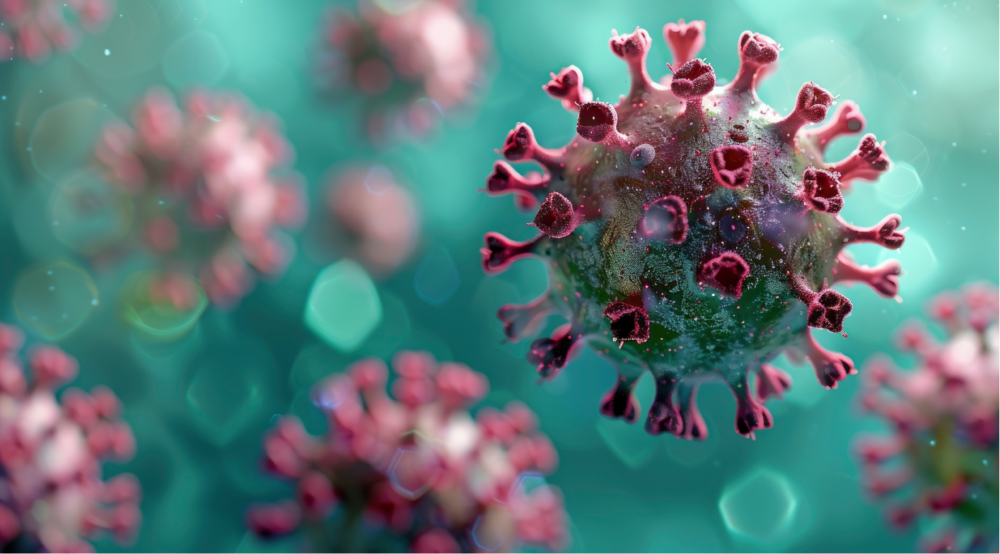Posted
12th October 2021
Events and Exhibitions
With a number of inspiring speakers and informative sessions, IP2021 conference made us reflect on the challenges of last year and focus on the new developments and research in Infection Prevention and Control. Apart from celebrating some more personal highlights for GAMA, we’d like to summarise what we thought particularly stood out in this year’s programme.
The personal accounts
Conference commenced with Professor Heather Loveday delivering the E.M Cottrell Lecture. She gave a moving reflection of viewing infection prevention and control (IPC) through a personal lens and reminded everyone that rather than seeing IPC as a barrier to essential care, it should be seen as a fundamental part of safer patient care.
More personal accounts came from both Dr Maggie Davies and Dr Susan Hopkins respectively, who shared their COVID-19 challenges in their senior leadership roles. This was a stark reminder of the decisions and tough choices that have been made during COVID-19. Decisions were difficult during the pandemic, priorities had to be made, some decisions were effective, others were not, but this was an opportunity to learn, evaluate and improve for the future. Both recognised the amazing work from IPC, Public Health, Scientists and all healthcare workers.
Ever considered life in a quarantine hotel? Professor Philip Russo gave us a thought-provoking insight into what quarantine is really like, in his lecture entitled ‘Hotel Quarantina – you can check out any time you like but you can never leave’. As well as everything we’ve read in the news, he covered the positive aspects that we don’t hear about, like helping 750 residents repatriate from Afghanistan and 160 Australian para-Olympians.

The mitigation strategies
Our sponsored session by Dr David Weber discussed several mitigation strategies including COVID-19 vaccine, aerosol transmission and mitigation, physical distancing, hand hygiene and surface disinfection. Dr Weber used the Swiss cheese model to help visualise COVID mitigation strategies and highlighted some examples of transmission of SARS-CoV-2 via the environment, including from an elevator button in an apartment building, elevator buttons or restroom taps in a mall or a toilet on aircraft. The Survival of SARS-CoV-2 and influenza A virus (IAV) on the human skin: Importance of hand hygiene in COVID-19, showed SARS-CoV-2 survived hours on human skin and had an even longer survival time on surfaces, reinforcing that proper hand hygiene is important to prevent the spread of SARS-CoV-2 infections.

Re-engaging with the public
Professor Sally Bloomfield focused on Developing and promoting hygiene in home and everyday life to meet 21st Century needs as well as developing an understanding of antimicrobial resistance and the hygiene hypothesis – that early childhood exposure to microorganisms contributes to the development of the immune system and can prevent disease in later life. She discussed how the public has reacted to COVID-19 and the messages that can be taken to re-engage the public in hygiene measures to prevent further infections, such as the roles of detergents and disinfectants. She highlighted the need for consistent, accurate and scientific messaging from public and governing bodies, as well as manufacturers of cleaning and disinfection products.

Water and air management
Peter Hoffman delivered the Ayliffe Lecture where he looked at the past, present & future. We had a complete history tour of disinfection. When it comes to sink trap discussions, we’re all led to believe this is a recently recognised source of microbes that cause healthcare associated infections, but et al in their study from 1970 outlined a disinfection method for sinks.
This session was followed by the inaugural Christina Bradley Lecture, which was delivered by Dr Jimmy Walker. He gave a beautiful tribute to Tina mentioning her work throughout his presentation. He focused on water and nosocomial infections with the simple water hygiene message of ‘keep it clean, keep it moving, keep it hot or cold’. He reminded us that the appropriate testing methods done in an accredited laboratory are vital to determine the correct disinfectant for each piece of equipment and also that design of hospitals, in relation to placement of sinks, can make an impact on reducing risks.
Water remained on the agenda with Dr Joost Hopman’s session ‘Crossroads of water and air: risk of sinks and showers in a new hospital’, which started with an analogy comparing the roots on trees to the sewage/ventilation systems in hospitals. Questioning the audience on ‘what really goes on below the surface’, he explained that the tree roots get intertwined, feeding off each other, many plumbing/sewage systems/ventilation systems in hospitals are interlinked and the infrastructure of these systems becomes a direct source of healthcare associated infection. He focused on three areas: ventilation systems, showers and sinks and the risks associated with contaminated water and air in hospitals.
The ‘hospital microbiome’ is brimming with microbes and antimicrobial resistance – Uncovering hidden antimicrobial resistance patterns within the hospital microbiome. Handwashing sink drains are increasingly implicated as a potential reservoir of antibiotic-resistant bacteria in hospital outbreaks with alarmingly 96% of non-hand hygiene activities taking place regularly in ICU handwashing sinks.
From water we then took on the challenge of air. Professor Catherine Noakes session on what we can learn from COVID-19 on transmission and the built environment, reminded us that real world ventilation is multimodal, complex and variable and that we need more education, analysis, short-term ventilation solutions and long term improvements in the built environment.

First and foremost we have a duty to care
The penultimate session delivered by Julie Storr ‘Compassion and IPC in the 2020s: time for a hard reset’ focused on why we can’t separate infection prevention and compassion. She thanked all those working in infection prevention striving to get their voice heard to ensure infection prevention and control is not misinterpreted in health and care settings.
The abstracts
Aside from the sessions, there was also over 130 abstracts submitted ranging from Ledwoch et al presenting evidence that showed hospital keyboards harbour various MDROs pathogens that can be transferred to other surfaces or hands even after wiping with sodium hypochlorite 1,000 ppm, to Wright et al titled ‘What do babies’ guts and sink waste traps have in common?’ Other poster topics included dry surface biofilms (DSB), where Centeleghe et al., demonstrated that Klebsiella pneumonia can remain viable in DSB for several weeks on surface. Castelli et al., gave a fascinating insight into the heterogeneity that exists in UK NHS decontamination policies, highlighting that there is variation in policies regarding who is responsible for decontaminating non-critical medical devices and that there is also ambiguity on the frequency and what they should be cleaned with.

The sharing
All of these sessions and the conference experience gave everyone time to reflect on the pandemic and share their journeys during this unprecedented time. It also gave GAMA the chance to win the Best Large Stand award (again)! Our blog wouldn’t be complete without a special mention for Elaine Overton, our IPC Clinical Nurse Trainer, who was awarded the prestigious Honorary Membership from the Infection Prevention Society. Well done Elaine!
We thoroughly enjoyed IP2021 and we can’t wait for IP2022 in Bournemouth! To find out more about the latest events GAMA has been attending, explore our Events & Exhibitions articles on our blog.

SHARE THIS ARTICLE
Tags
Latest News
Advancing Continence Care with Clinell Contiplan: Expanded Indications, Pathways and Proven Outcomes
This World Continence Week, Clinell Contiplan 3-in-1 Cream Cloths introduce…
Celebrating 20 Years of GAMA Healthcare: Our Story
This month, GAMA Healthcare celebrates 20 years of helping prevent…
Norovirus and gastroenteritis outbreaks, the party ‘pooper’ you don’t want invited!
Recently, on 11 October 2024, NSW Health issued a health…
Clean Between to Reduce Healthcare-Associated Infections
Healthcare-associated infections (HAIs) are a significant concern for healthcare facilities…



